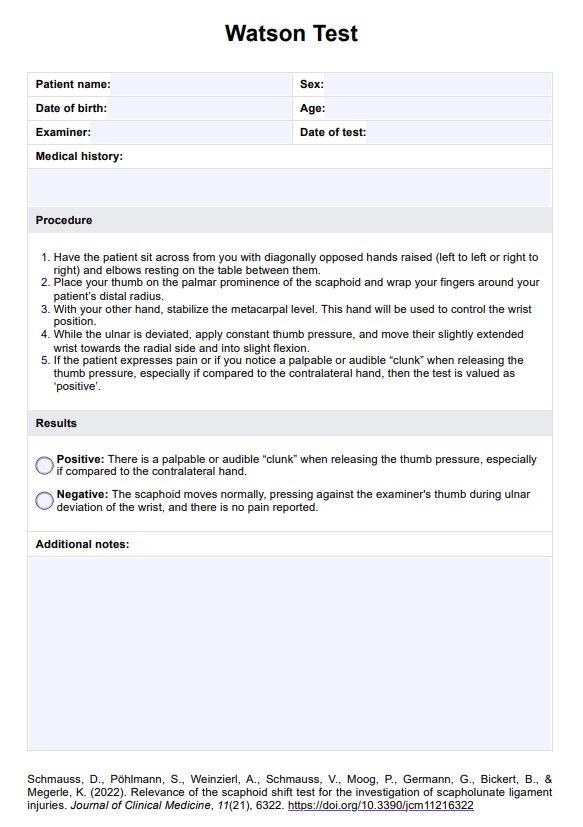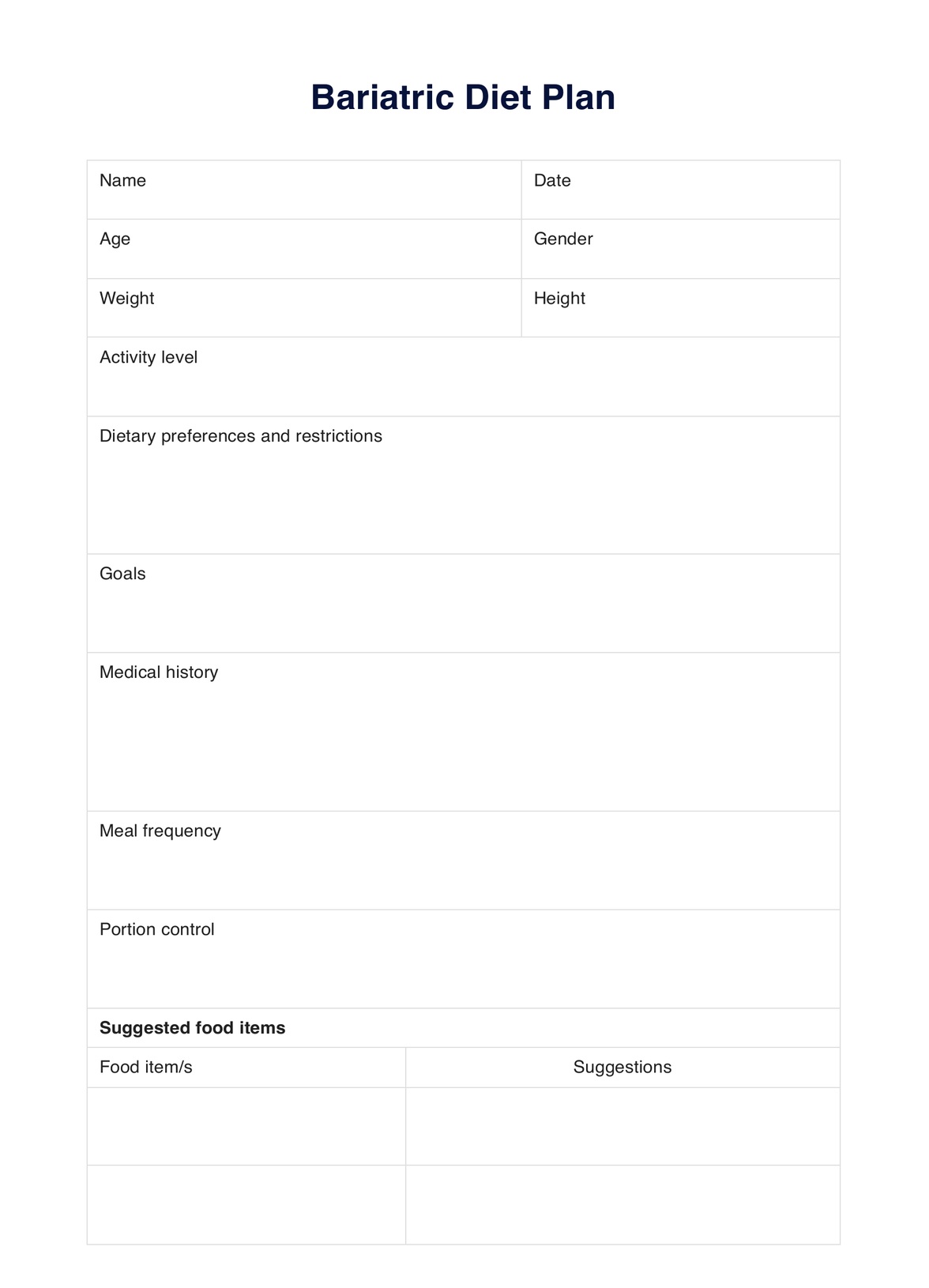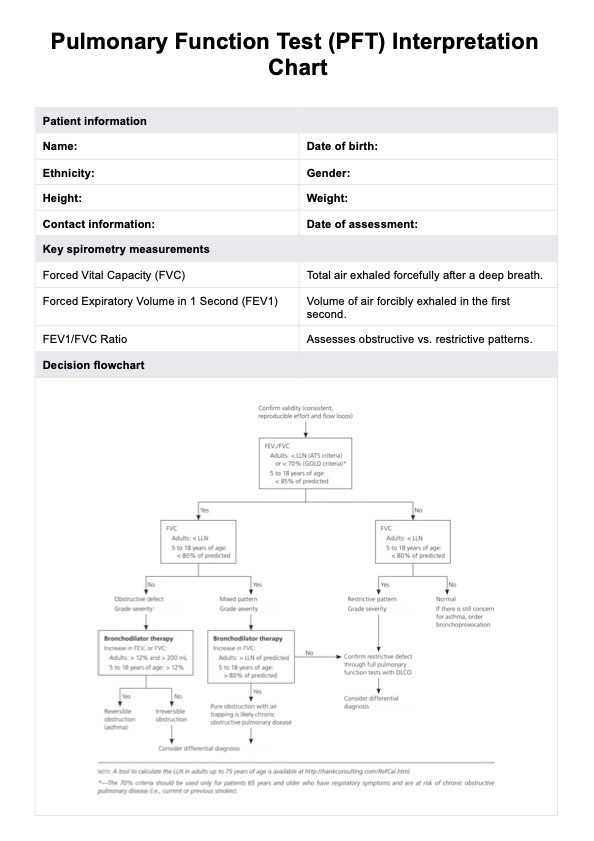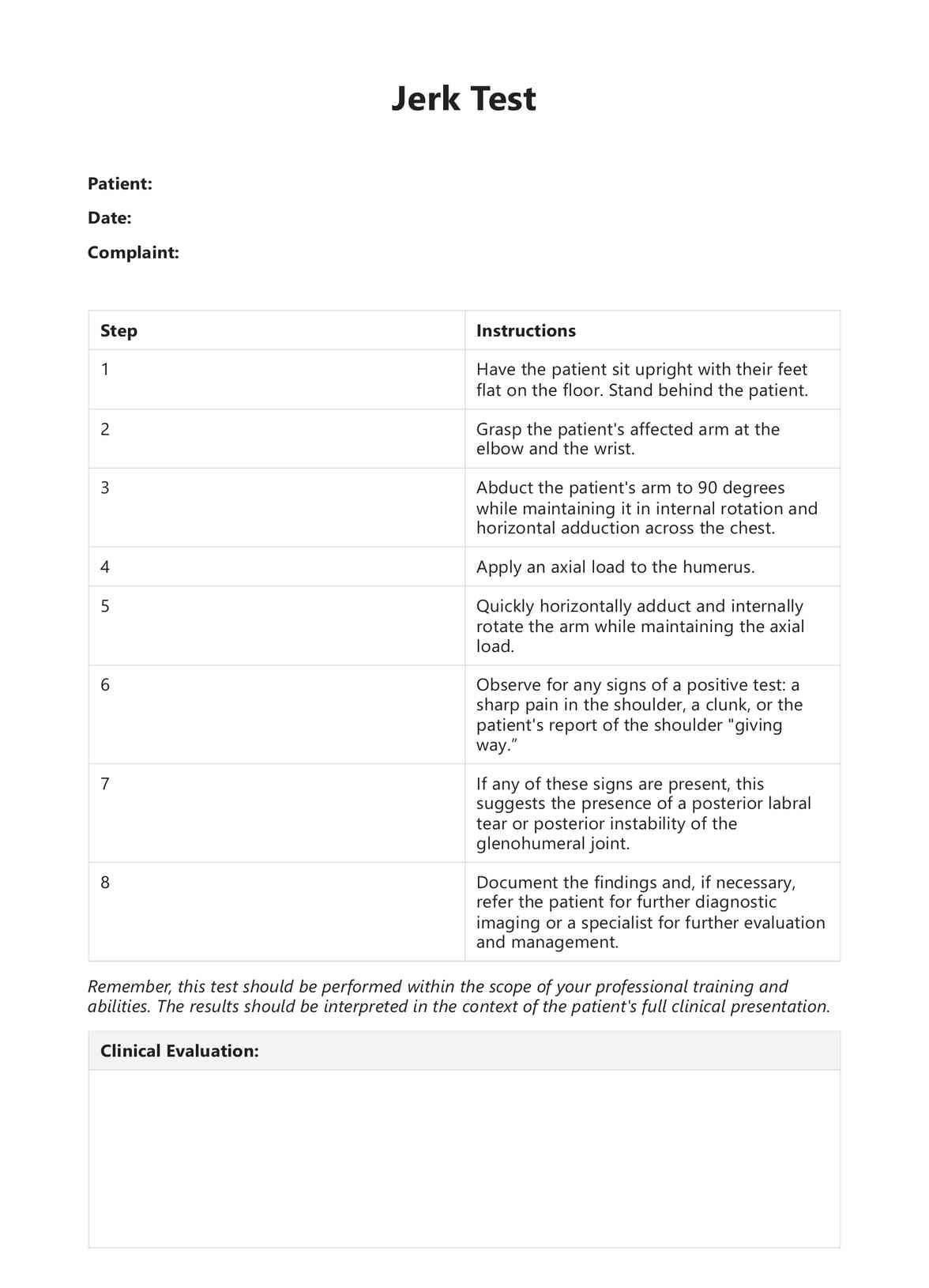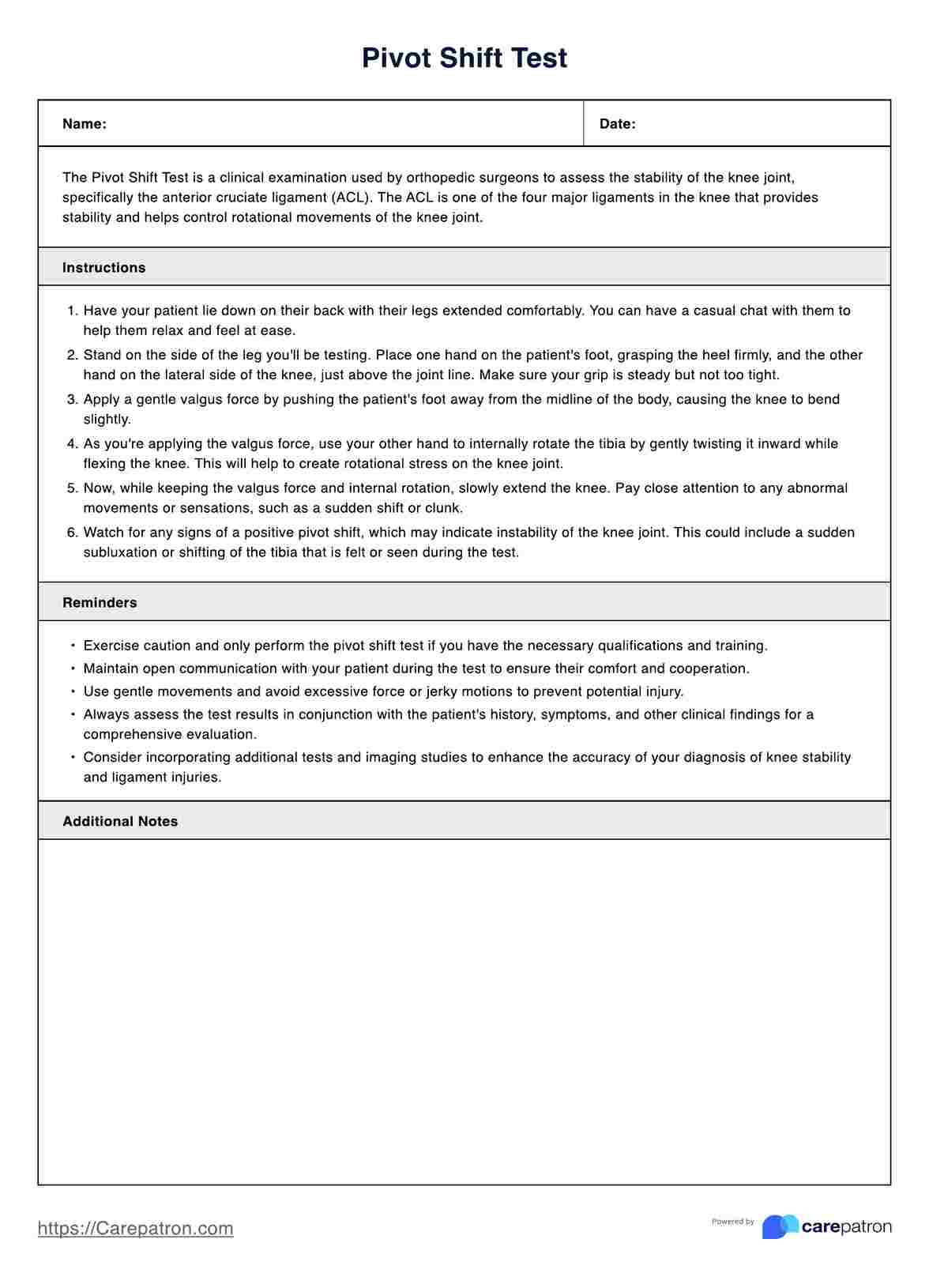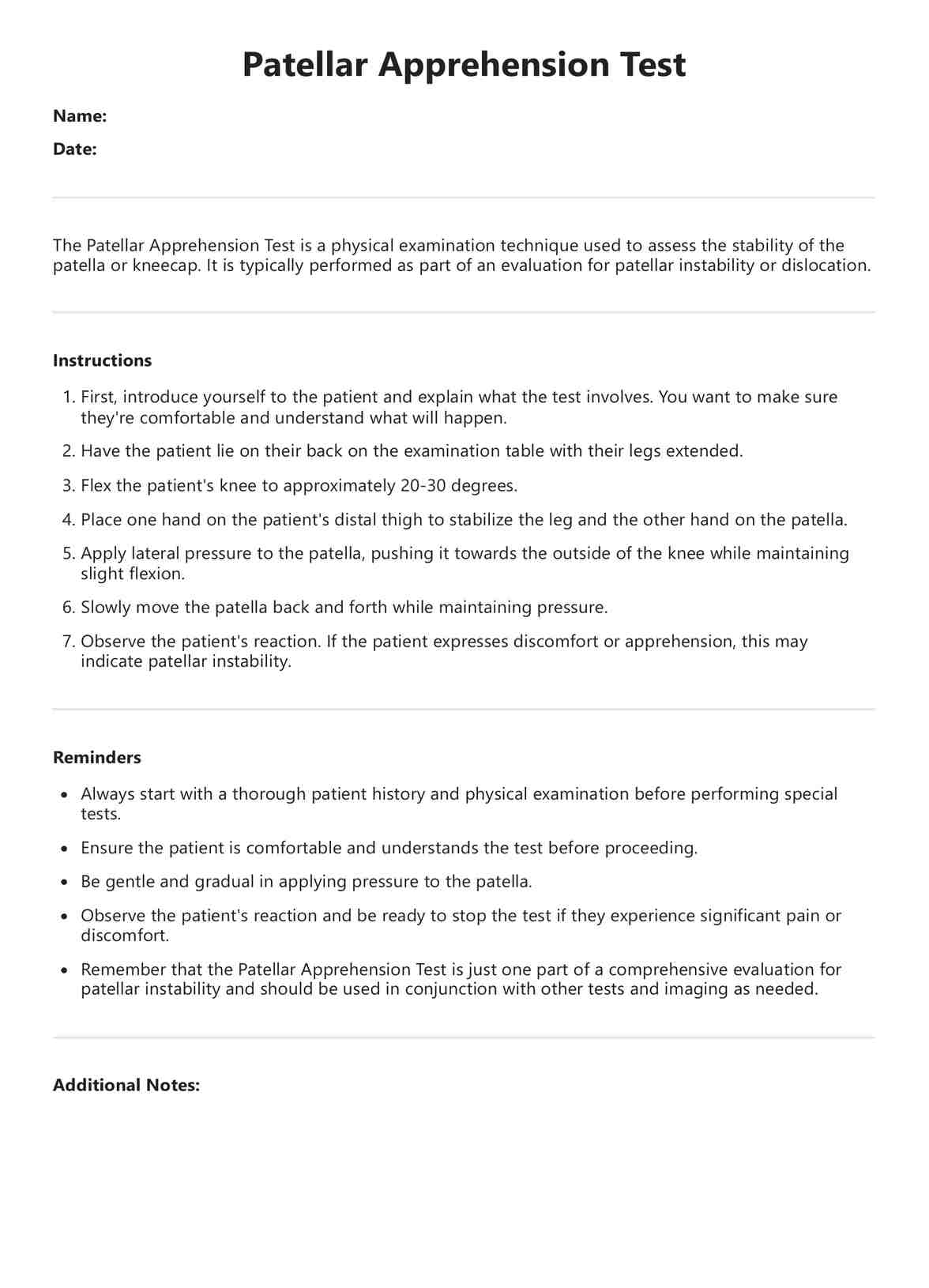Cranial Nerve Exam
Use our Cranial Nerve Exam template as a guide when studying or conducting a cranial nerve assessment.


Introduction to cranial nerves
The cranial nerves test is a critical aspect of neurological assessment, providing key insights into the functioning of the twelve cranial nerves. Each cranial nerve has a specific role, ranging from sensory functions like smell and vision to motor functions like facial and eye movements. The cranial nerves are traditionally numbered I through XII and named based on their primary function or the area they affect. Here’s an overview of the cranial nerves and their purposes:
- Cranial nerve I — olfactory: This nerve is pivotal for the sense of smell.
- Cranial nerve II — optic: Also known as the optic nerve, this nerve is essential for normal vision.
- Cranial nerves III, IV, VI — oculomotor, trochlear, abducens: These three nerves control eye movements.
- Cranial nerve V — trigeminal: This nerve is responsible for helping a person chew and clench their teeth and provides sensation to multiple facial receptor sites.
- Cranial nerve VII — facial: This nerve is responsible for facial expression, speech articulation, lip movement, and tone.
- Cranial nerve VIII — vestibulocochlear: This nerve is involved in hearing and balance.
- Cranial nerve IX, X — glossopharyngeal, vagus nerve: The glossopharyngeal and vagus nerves are essential for swallowing, taste, and the gag reflex.
- Cranial nerve XI — spinal accessory: The spinal accessory nerve controls the sternocleidomastoid and trapezius muscles.
- Cranial nerve XII —hypoglossal: The hypoglossal nerve controls tongue movements.
In clinical practice, cranial nerve testing is crucial for diagnosing conditions like stroke, multiple sclerosis, and tumors. Therefore, a comprehensive examination of the cranial nerves is an indispensable tool in neurological assessment, aiding in accurately diagnosing and managing various neurological disorders.
Cranial Nerve Exam Template
Cranial Nerve Exam Example
What is a Cranial Nerve Exam?
The cranial nerve examination forms an important part of the complete neurological examination and involves examining the functioning of the cranial nerves. It is a structured examination designed to check each cranial nerve using various methods that can usually be completed with equipment readily available in a hospital environment (Reese, 2023). Its broader purpose is to localize neuropathology as part of a complete neurological exam.
Clinical indications for an examination of cranial nerves include (Reese, 2023):
- Trauma or traumatic brain injury (TBI)
- Unconsciousness or coma
- Intracranial hemorrhage
- Stroke
- Cerebral aneurysm
How to do a cranial nerve assessment?
Need a quick memory refresh on how to examine each cranial nerve? Here's a concise cranial nerve exam how-to based on the Oxford Medical Education Cranial Nerve Examination guidelines (Oxford Medical Education, 2015). Once you have a copy of our Cranial Nerve Assessment template, follow the order of cranial nerve testing below for a comprehensive assessment of cranial nerve function:
Step 1: Obtain a copy of the template
Before starting the examination, you must obtain a copy of the template by clicking the "Use Template" button. Afterward, have your patient fill in the fields that require patient information.
Step 2: Assess the olfactory nerve (CN I)
Assess the olfactory nerve by noting any recent change in the sense of taste or smell. You can also formally assess them using bottles filled with familiar scents like coffee or peppermint, occluding one nostril at a time.
Step 3: Assess the optic nerve (CN II)
Assess the optic nerve through vision tests to detect any relative afferent pupillary defect. You can use the Snellen eye chart to check visual acuity, direct confrontation to evaluate visual fields, the swinging flashlight test to check the pupillary light reflex, and more.
Step 4: Assess the oculomotor nerve (CN III), trochlear nerve (CN IV), and abducens nerve (CN VI)
Cranial nerves III, IV, and VI are tested simultaneously. Remember to check if the patient's levator palpebrae, superior oblique, and lateral rectus muscle are individually and collectively functioning correctly by evaluating the primary position, assessing for diplopia, etc.
Step 5: Assess the trigeminal nerve (CN V)
As for assessing the trigeminal nerve, you can evaluate the ophthalmic, maxillary, and mandibular sensory branches with a piece of cotton wool. Inspect for wasting of the masseter and temporalis muscles and check for jaw resistance strength. Check corneal reflex and jaw-jerk reflexes.
Step 6: Assess the facial nerve (CN VII)
To assess the functioning of the facial nerve, ask the patient to scrunch up their eyes, look upwards and raise their eyebrows, puff out their cheeks, show their teeth, and inspect for facial asymmetry. As for taste, you can have them taste a substance with their eyes closed.
Step 7: Assess the vestibulocochlear nerve (CN VIII)
To test the vestibular function of the nerve, perform a gross hearing assessment followed by a Rinne test, Weber's test, and otoscopy. If hearing loss is detected, you can also conduct audiometry.
Step 8: Assess the glossopharyngeal nerve (CN IX) and vagus nerve (CN X)
The glossopharyngeal and vagus nerve tests involve assessment for dysarthria or dysphonia. Ask the patient to say “aah” and inspect the soft palate and uvula. Perform a swallow assessment or assessment of the gag reflex.
Step 9: Assess the spinal accessory nerve (CN XI)
Ask the patient to raise their shoulders, turn their head, and keep them there while you provide resistance.
Step 10: Assess the hypoglossal nerve (CN XII)
To test the hypoglossal nerve, inspect the tongue for wasting and fasciculations, ask the patient to protract their tongue and inspect for deviation, and test the tongue strength against each cheek.
Benefits of using our Cranial Nerve Exam template
Although one can conduct the assessment without the need for an examination template, there are an array of benefits to using our cranial nerve assessment, such as:
- Better structure your exam: This template serves as a pre-formatted record of your clinical findings and a structure for the exam itself. It can help keep you on track and ensure you don't accidentally skip any during the examination.
- Keep your findings organized: Our Cranial Nerve Exam template will help you keep your notes from the cranial nerve exam laid out and understandable.
- Easily share results with other practitioners: Your colleagues will thank you for using a formatted Cranial Nerve Exam template, as they can quickly understand your findings and move on to making informed treatment decisions.
- Standardize your Cranial Nerve Exams: Using the same template for each exam, you can demonstrate your efforts to standardize your practice and deliver the same high-quality examination to every patient.
- Go fully digital: This exam template can be filled out and shared entirely digitally, which saves time and improves your information security.
References
Reese, V., Das, J. M., Al Khalili, Y. (2023, May 6). Cranial nerve testing. In StatPearls [Internet]. Treasure Island (FL): StatPearls Publishing. https://www.ncbi.nlm.nih.gov/books/NBK585066/
Oxford Medical Education. (2015). Cranial nerve examination. https://oxfordmedicaleducation.com/clinical-examinations/cranial-nerve-examination
Commonly asked questions
Like with any clinical examination, there is some variation in how you choose to assess each Cranial Nerve Exam, but some things should remain constant every time you conduct an assessment. These include gathering the required equipment, checking the patient's name and date of birth, introducing yourself, explaining the examination in understandable language, and gaining consent to proceed.
Some contraindications to the Cranial Nerve Exam, such as facial trauma or swelling, may prevent proper assessment of CN III, CN IV, and CN IV. With advances in imaging technology, the results of a cranial nerve exam are no longer the sole method for diagnosing lesions. However, the cranial nerve exam remains an important part of the neurological exam and one that can be performed quickly with minimal equipment.
This will depend on the findings of the Cranial Nerve Exam. Following the Cranial Nerve Exam, further neurological testing, formal hearing assessments, speech examinations, or neuroimaging could follow.


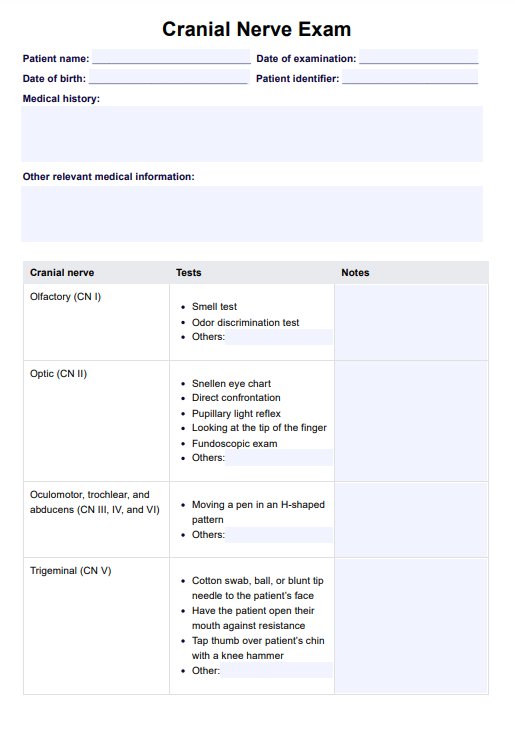
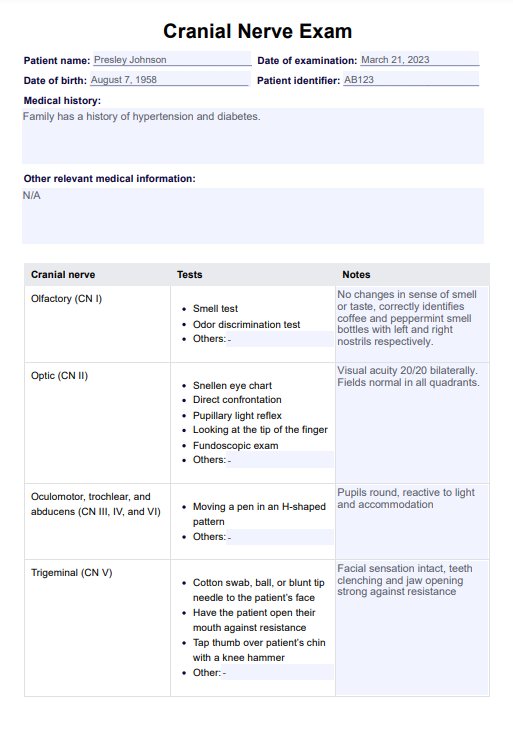

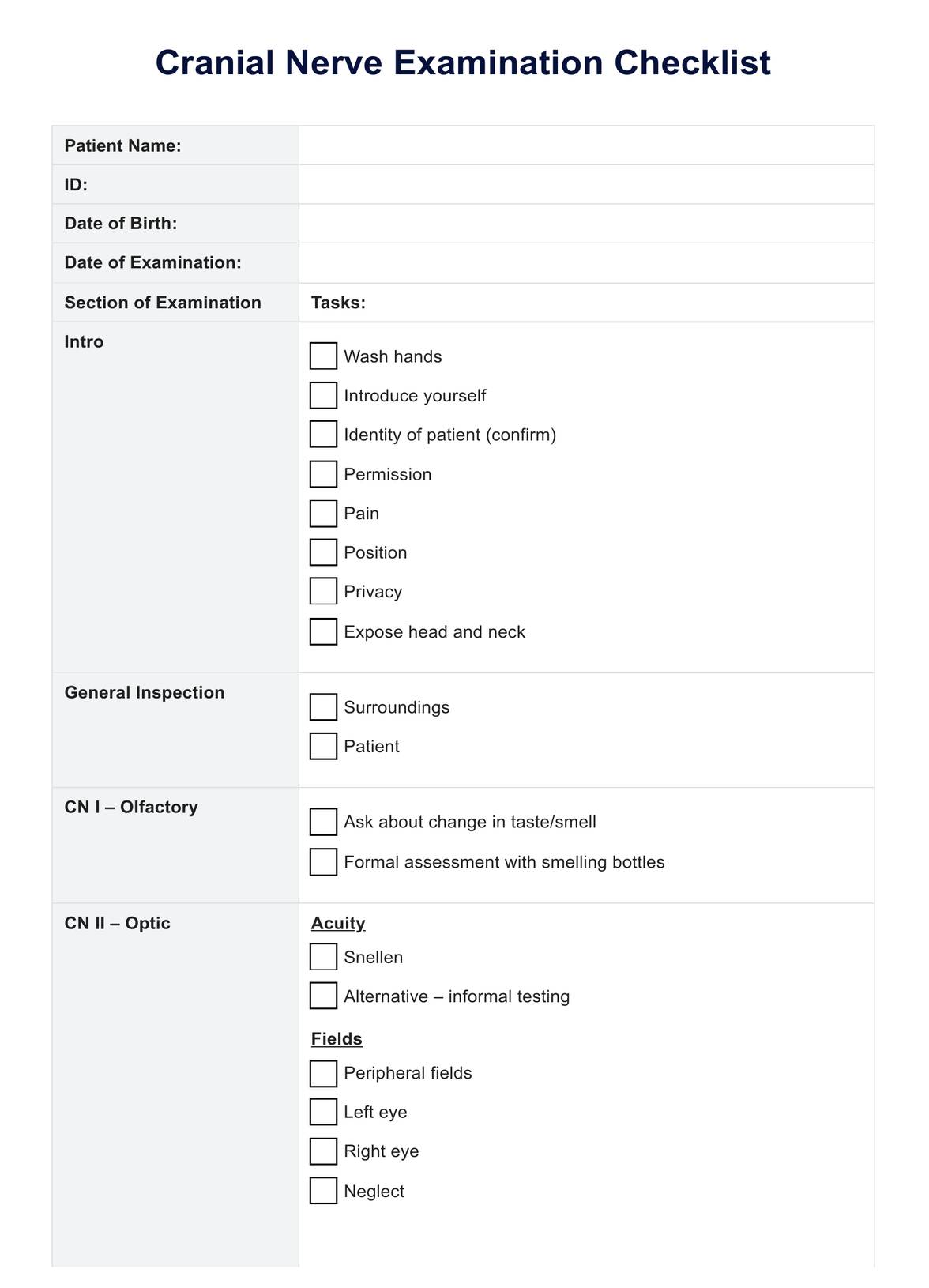


















-template.jpg)
















































































